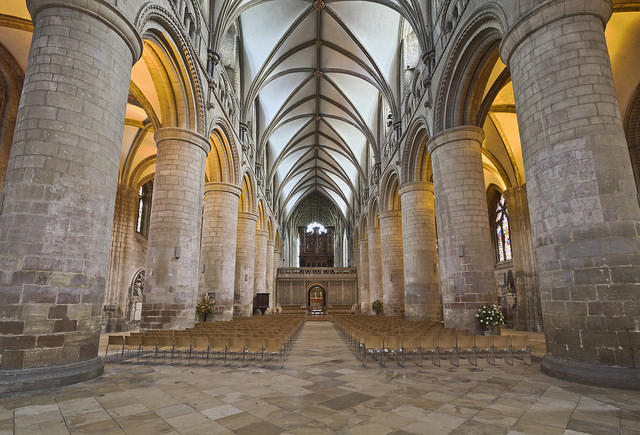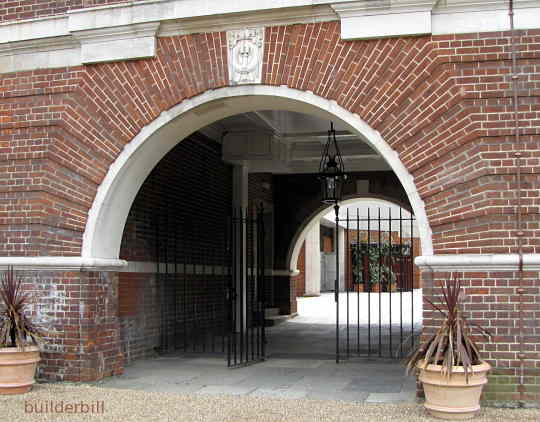History:
The Romanesque period was a period of art that started in Italy and Southern France in around 800 A.D. This style is based on the basics of Roman architecture, most prominently the Roman arch. "When Charlemagne was crowned Holy Roman Emperor in 800 C.E., Europe began to take its first steps out of the “Dark Ages” since the fall of Rome in the fifth century. The remains of Roman civilization were seen all over the continent, and legends of the great empire would have been passed down through generations. So when Charlemagne wanted to unite his empire and validate his reign, he began building churches in the Roman style–particularly the style of Christian Rome in the days of Constantine, the first Christian Roman emperor." (khanacademy.org)
 |
| Gloucester Cathedral, nave, built in 1089 |
Charlemagne was concerned with preserving many forms of art. He encouraged learning the arts, preserved Roman literature, established schools and monasteries, and encouraged building using the technology of Roman structures. One thing that is incredibly well known from this time period is the creation of illuminated manuscripts. These were works of art created telling the stories of the bible, often drawn by the monks in monasteries. They were very detailed works of art that were admired by many people of the time and are still admired today. It also included the use of beautiful calligraphy.
 |
| Illuminated Manuscripts with calligraphy |
 |
| An illuminated manuscript telling stories of the Bible |
The most important form of architecture during this period was the church. The main elements of these churches included semicircular arches and vaulted ceilings, mimicked the Early Christian basilica, side chapels were added to the transept, multiple aisles, larger for more worshipers, and areas for a choir were added.
Current Applications:
 |
| Mega Church with vaulted ceilings |
 |
| Mega Churches |
 |
| Semi-circirular arch |



jpg1336006760103.png)





No comments:
Post a Comment